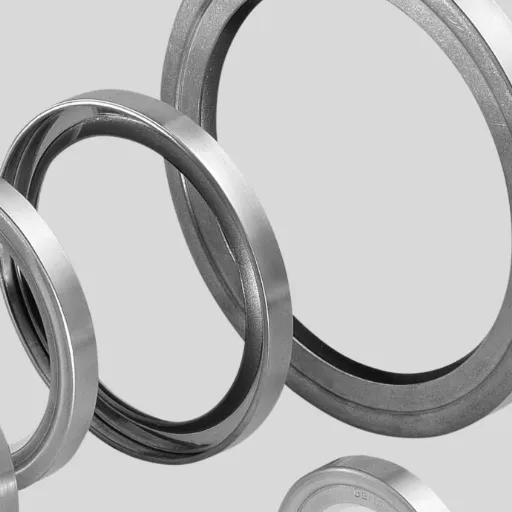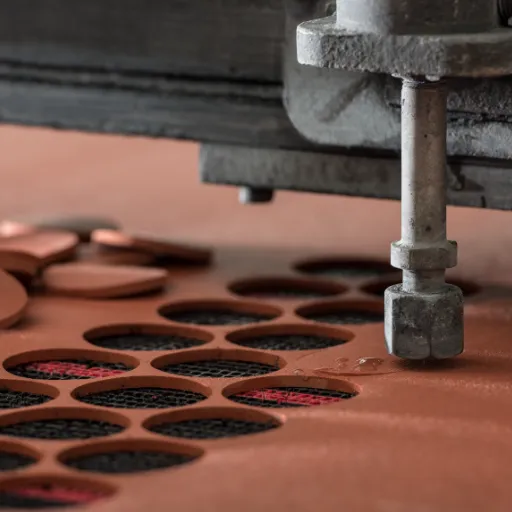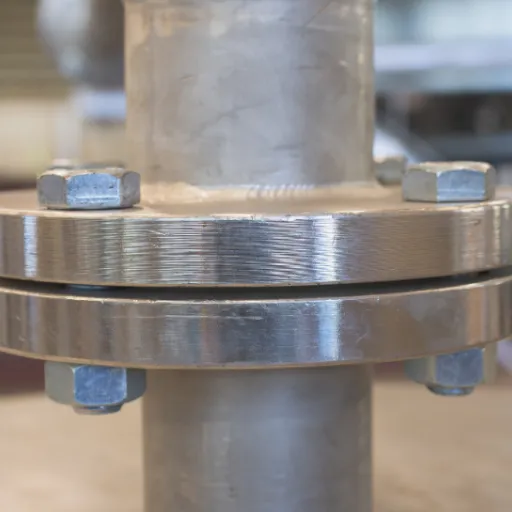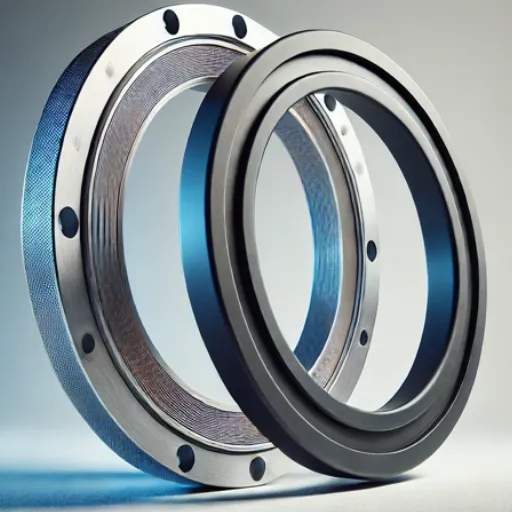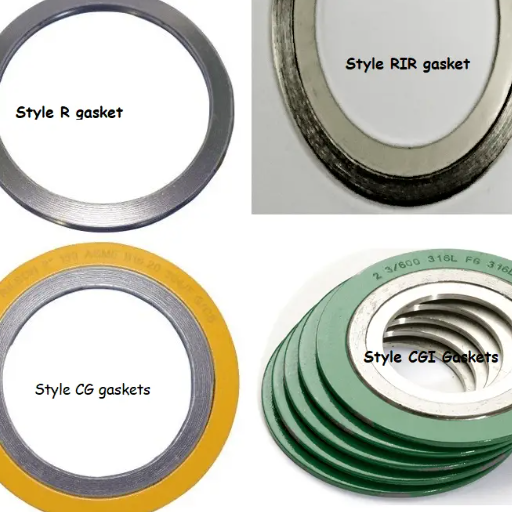Flanges are a critical component in piping systems, ensuring secure connections between pipes, valves, and other equipment. However, these essential parts are often exposed to harsh environmental conditions, such as moisture, dust, and corrosive materials, which can lead to damage or degradation over time. This guide explores the importance of what is the purpose of a flange cover? using flange covers as protective solutions to extend the lifespan and maintain the integrity of pipe flanges. From understanding the functions of flange covers to selecting the right type for specific applications, this comprehensive resource will equip you with the knowledge to safeguard your piping systems efficiently and effectively.
Understanding Flanges

Flanges are crucial workpieces that allow for the assembly of pipes, valves, and other equipment in multiple industries. They allow a firm and reliable connection, keeping stability while offering assembly, disassembly, and maintenance options for the system. Made of materials such as stainless steel or carbon steel, flanges are designed to bear pressure and environmental conditions. Their principle is to transfer liquids, gases, or other substances via pipelines safely and effectively.
What is a Flange?
A flange refers to a mechanical element for joining pipes, valves, pumps, and other equipment in a piping system. This connection is made through circular pieces or flat pieces with bolted faces that join various sections in a secure assembly while permitting disassembly for reasons of inspection, cleaning, or repairs. Flanges are widely used in oil and gas, chemical processing, power generation, and water treatment, to name just a few industries, created for different pressure ratings and environmental conditions. The modern flange is usually made of materials like stainless steel, carbon steel, or alloys, so as to confer durability and corrosion resistance.
Flanges usually work together with gaskets and bolts to create a tight, leak-proof seal. Its design varies according to different application requirements; for instance, slip-on, weld neck, blind, and threaded flanges are the different types of flanges for different requirements. Because of modern-day technological developments, flange manufacturing is done by high-precision processes to enhance their performance and service life, making them indispensable parts in any up-to-date engineering system.
Types of Flanges
As per design and usage, flanges are chiefly divided into slip-on, weld neck, blind, or threaded flange types. Slip-on flanges are simple to fit and are best for low-pressure applications. Weld neck flanges are strong and are commonly utilized in environments of high pressure because the weld neck flange has a strong connection with the pipe. Blind flanges have no central opening and are meant to block off flow in a pipeline with the utmost certainty, thereby becoming invaluable for maintenance or testing. Threaded flanges, conversely, have a female thread in their bore and enable easy assembly without welding. These are for low-pressure applications where welding is not feasible. Each of these flange types is chosen to satisfy certain sets of performance and longevity needs as per their intended use.
Flange Face and Its Importance
The flange face is a very important surface that leads to the integrity and performance of a flange connection. It means the area of the flange in direct contact with a gasket, making it very important in forming the seal between the flange and the gasket forcefully. The type and surface condition of the flange face are paramount not only for correct gasket compression but also in preventing any leaks in leakage-prone high-pressure or high-temperature environments and ensuring the safety of the lineup.
Typically, flange faces can be raised face (RF), flat face (FF), or ring joint face (RTJ), each with its specific applications. For instance, raised face flanges are commonly applied in industries for reinforcing the gasket, while RTJ flanges are utilized in high-pressure applications for precise sealing. In determining the proper flange face type, there must be consideration of its compatibility with the system to be connected, pressure levels, and working conditions.
The latest trends are for stronger materials and better machining in the design of flange faces. Corrosion resistance of flange faces has hit the search charts, as well as questions on how to customize a flange face. These industry concerns indicate that importance must be given not only to the selection of the correct flange face type but also to the manufacture of that flange face in accordance with present-day engineering design standards.
Flange Covers and Protectors

Flange covers play an integral role in protecting the vulnerable flanged joints during storage, transportation, or installation. When dirt impinges on the surface of the flange, along with moisture and mechanical injury, corrosion would set in, thereby rendering perfect sealing impossible. Usually constructed from petroleum-based plastic or rubber, the covers come in an assortment of sizes to suit different flange specifications. Hence, by applying flange covers, industries can save costly treatments or replacements while adding to the durability and reliability of their equipment.
What is a Flange Cover?
A flange cover safeguards a flange during storage, transportation, and installation. Flanges are very important equipment used in the connection of pipes, valves, and industrial fittings in industries like oil and gas, chemical processing, and manufacturing. The priority of the flange cover is to guard the flange face and bolt holes from contaminants such as dirt, grease, and moisture that may, in some way, degrade their integrity and cause failure in sealing during operation.
Modern-conscious flange covers are fabricated from tough materials such as polyethylene, silicone, or rubber for good resistance against physical damage, corrosion, and weather agents. A wide array of sizes and designs are available for flange covers-such as push-in, clip-on, and stretch-fit-to suit different flange configurations. Use of flange covers will not only increase one’s equipment lifetimes but also cuts down the maintenance cost and time, thus posing one paramount in the operation and safety of many industrial setups.
Types of Flange Protectors
|
Type |
Material |
Attachment |
Features |
Use Case |
|---|---|---|---|---|
|
Raised Face |
PE, PVC |
Push-in, Adhesive |
Protects critical face |
Sandblasting, Storage |
|
Full Face |
PE, PP |
Studded, Bolt Hole |
Covers entire flange |
Corrosion Prevention |
|
Push-In |
LDPE, PVC |
Flexible Fins |
Snug fit, no tools |
Quick Installation |
|
Adhesive |
PVC, Silicone |
Peel & Stick |
Easy application |
Temporary Protection |
|
Bolted Quick-Fit |
HDPE, Vinyl |
Bolt Holes |
High-pressure use |
Industrial Settings |
Benefits of Using Flange Covers
The benefits provided by flange covers are many and essentially contribute to the protection and smooth running of industrial operations. They protect flanges from damage, such as dents or scratches, which is essential for keeping critical components intact. They also protect against environmental conditions such as moisture, dust, or chemical exposure to prevent corrosion and contamination. By maintaining their flanges, these covers reduce the cost of continuous maintenance and repairs, thereby increasing the longevity of the equipment. Moreover, flange covers also enable safe and efficient transportation and storage by keeping debris or dirt out of critical pipe systems. Considering their design benefits, they can be used flexibly across a range of industrial applications where dependability and cost-efficiency are required.
Installing Flange Covers

Although installing flange covers is a simple process, it is essential for the protection and integrity of the equipment. Select the right size and material for the flange cover. Make sure the flange surface is clean of any dirt, debris, or contaminants that might affect sealing. Position the cover carefully over the flange such that the edges line up properly. Secure the cover according to what is required, for example, straps, bolts, or clips. Once again, always adhere to the manufacturer’s instructions to ensure the best performance and life expectancy. This very simple procedure helps keep your equipment safe from damage that would otherwise shorten its useful life.
How to Install a Flange Cover
Flange cover installation is a simple task that starts with cleaning the area so that it is clear of any debris. Firstly, wipe the flange surface after removing dirt or contaminants that could prevent proper sealing. Secondly, place the flange cover carefully over the flange, ensuring that it aligns correctly with the edges. Using the appropriate method for your particular cover type, be it straps, bolts, or clips, secure the cover. Apply even pressure and adhere to the manufacturer’s instructions throughout the process to ensure a snug fit. With the flange cover correctly installed, any damage to the equipment might be prevented, thus extending its life and saving on costly repairs. If in doubt, seek additional clarification from the manufacturer’s guide or ask a professional.
Best Practices for Flange Installation
If I talk about flange installation, I usually start by cleaning the flange surfaces entirely, washing off any debris, oil, or residue that could dull the ability of a seal. Half of the job is alignment, so I spend ample time ensuring flanges are properly aligned before I go on with inserting the bolts. I proceed to tighten the bolts evenly, following an alternate pattern to apply even pressure and prevent any possibility of warpage. I use a torque wrench to tighten the bolts as per the specified torque given by the manufacturer, because any over- or under-tightening could jeopardize the integrity of the joint. Lastly, I give an inspection to the assembly for obvious malpractices such as gaps or misalignment, then test for leaks if necessary, making sure the installation is as secure and reliable as possible.
Common Mistakes to Avoid
|
Key Point |
Mistake |
Solution |
|---|---|---|
|
Planning |
No plan |
Map garden layout |
|
Spacing |
Overcrowding |
Follow spacing guides |
|
Watering |
Over/underwatering |
Deep, weekly watering |
|
Soil |
Poor prep |
Add organic matter |
|
Chemicals |
Overuse |
Use sparingly |
|
Timing |
Wrong pesticide use |
Apply at right time |
|
Pests |
Ignoring pests |
Use organic controls |
|
Variety |
Too many types |
Focus on essentials |
|
Harvest |
Ignoring ripe crops |
Harvest promptly |
|
Notes |
No records |
Keep a garden diary |
Flange Protection in Pipelines

The protection of flanges is a very important aspect of pipeline systems, particularly in harsh environments where the systems are susceptible to damage. Flange covers or shields are considered when there is an external threat that can cause damage to the pipeline flanges, including corrosion or contamination from dirt, debris, or moisture. Appropriate coatings or sealants can protect flanges from chemical attacks and weathering deterioration, while periodic inspections will help identify any signs of degradation at an early stage. Finally, the choice of materials for the flange component must be taken into consideration to provide an extra layer of protection to the pipeline, such as stainless steel or other corrosion-resistant alloys. In this manner, the pipeline experiences less downtime, and maintenance costs remain lower, resulting in a much longer pipeline life.
Why Flange Protection is Essential
Flange protection is essential because of the direct impact it has on the working efficiency, safety, and longevity of the pipeline systems. From my experience and research, I’ve found that flange protection acts as a barricade against corrosive attacks, mechanical damage, or entry of debris into the system, which can cause expensive damage. It also tightens the sealing ability of flanges, preventing leakages and environmental hazards. Then, it should be ensured by me that high-quality protective covers or coatings that meet the environmental and operational conditions are provided to them. An investment in flange protection would, therefore, save money spent on repairs and replacements, ensure working standards, promote safety surrounding the operation, and increase overall reliability.
Assessing Flange Damage
In assessing flange damage, I will first examine the surface for obvious signs of corrosion, pitting, or cracking, as these indicators may show that the integrity of the surface has been massively compromised. I will also check for the signs of uneven wearing and deformation because these might be indicators of improper installation and improper pressure applied within the system. Measuring the flatness and alignment of the flange to confirm its proper sealing during operation is required. Besides, I perform a review of the maintenance records to link any repetitive occurrences to the problem. Finally, I will perform non-destructive testing techniques, such as ultrasonic and magnetic particle inspection, so as to catch any hidden flaws, thereby performing a duo of analyses: visual and technical, after which I can effectively ascertain the level of damage and plan for the required remedial actions.
Choosing the Right Flange Guardian
In deciding upon the correct flange guardian necessary, with regard to the specific conditions that exist in your working environment, these are some of the major considerations: what kind of fluid is to be handled, operating pressure and temperature, and the flange dimensions themselves. The material from which the guard is constructed should be compatible with the chemical nature of the fluid it will protect against, so as not to be corroded or degraded itself. Ease of installation and maintenance should be considered in its design, and compatibility with all local safety and performance requirements must be assured. By assuring these conditions, you will have ensured that the potential for leakage is minimised and the reliability of the system is maintained.
Conclusion

In conclusion, flange guards are a perfect safety system to ensure the safe operation of processes. Hence, the main focus during selection should be the compatibility of the materials, adherence to safety standards, and simplicity of installation and maintenance. Following these important considerations will help safeguard both plant and personnel much better.
Recap of Flange Protection Benefits
A flange guard is more than merely a safety measure; it ensures operational safety and efficiency in an industrial setup. Flange guards prevent any type of leakage and keep hazardous fluids in, thereby protecting personnel from imminent injuries and environmental contamination. They are, in short, the interviewers who shield you from huge losses resulting from the downtime arising from their own failure. As the newest industry data reveals, efficient flange protection reduces maintenance efforts significantly, extends the service life of equipment, and ultimately improves the reliability of the entire system.
Becoming clear from the recent data trends, industries with a proactive safety culture tend to have better records of complying with environmental and safety legislation. This sets down a bedrock for minimizing legal and business risks while gaining stakeholder trust based on a reputation derived from operational practices. At this point, putting in quality flange guards is no longer just a matter of being on the safe side; it is a safeguard toward maintaining industrial systems.
Final Thoughts on Flange Safety
The safety of flanges is very important in keeping industrial integrity and avoiding workplace accidents. Recent data and search trends show an exceptional rise in queries about flange protection, its proper installation, and material selection, which shows the importance companies ascribe to this initiative; they are also directly linked to other aspects of workplace safety. Recommendation data clearly shows industries are concerned with risk reduction through the application of high-quality flange guards and sealants, as well as their regular maintenance regimen for replacements and repairs. Integration of modern flange technology in the workplace should be accompanied by continuous learning and adherence to safety regulations as businesses seek to protect themselves, reduce downtime, and encourage a culture of responsibility and resilience.
Reference Sources
- Cover-Plate and Flange-Plate Reinforced Steel Moment
This document discusses the use of cover plates in structural applications, including their role in reinforcing beam flanges.
Read more here1. - 29 CFR § 1926.303 – Abrasive Wheels and Tools
This regulation from the Cornell Law School mentions safety flanges and their design to ensure safety in case of accidental breakage.
Read more here2. - Strengthening Steel Girders for Flexural Resistance
This document from the California Department of Transportation explains the use of steel cover plates to enhance the flexural resistance of steel girders.
Read more here - Top Flange Manhole Suppliers in China
Frequently Asked Questions (FAQs)
What is the purpose of a flange cover in pipeline systems?
The purpose of a flange cover in pipeline systems is to provide protection to the sealing surface and flange face from external elements such as dust, debris, and moisture. By covering the flange, you minimize the risk of damage to the flange and ensure proper flange integrity during storage or transportation. Flange covers are essential for maintaining leak prevention and regulatory compliance, especially in environments where flanges are exposed to harsh conditions. They can be easily installed and removed, making them practical for various applications. Additionally, using flange protectors helps prolong the lifespan of the flange by preventing corrosion and other forms of damage.
How do you choose the right flange protection for different types of flanges?
Choosing the right flange protection depends on the type of flange and the specific requirements of your application. Consider factors such as the diameter of the flange, the pressure class, and the material compatibility when selecting protective covers. For instance, if you are dealing with a raised machine face flange, you might opt for face flange protectors that fit snugly and ensure a tight seal. Additionally, you should look for flange covers made of durable materials like polyethylene or LDPE that can withstand environmental stressors. Understanding the different types of flanges and their intended use will also guide your selection process.
What are the benefits of using flange protectors during installation and removal?
Using flange protectors during installation and removal offers multiple benefits, including safeguarding the flange face sealing and preventing ingress of contaminants. These protective devices can reduce the risk of accidents by keeping sharp edges and exposed surfaces covered. Flange protectors designed with flexible ribs allow for easy attachment and removal, simplifying the installation process. Additionally, they provide corrosion protection, which is crucial for maintaining the integrity of the flange over time. By utilizing these protectors, you can also minimize the potential for damage to the flange during handling.
What materials are flange covers typically made of, and why does it matter?
Flange covers are typically made of materials such as polyethylene (PE) and low-density polyethylene (LDPE) due to their durability and resistance to various external elements. The choice of material is crucial because it directly affects the cover’s ability to provide adequate protection against corrosion, debris, and environmental factors. Covers made from these materials are lightweight yet strong, ensuring they can withstand the rigors of industrial applications. Moreover, the compatibility of the flange cover with the pipeline’s requirements ensures that it can effectively prevent damage to the flange while maintaining regulatory compliance. Selecting the right material helps ensure the longevity and functionality of the flange.
How do flange covers play a role in preventing flange damage?
Flange covers play a critical role in preventing flange damage by acting as a barrier against environmental hazards. They shield the surface of the flange from external elements such as dust and moisture that can lead to corrosion over time. By using flange protectors, you can significantly reduce the risk of accidents caused by exposed flanges, which may pose safety hazards during operations. Additionally, these covers help maintain the integrity of the sealing surface, ensuring that flanges remain functional and leak-free. In essence, flange covers are a simple yet effective solution for protecting your flanges and prolonging their lifespan.

